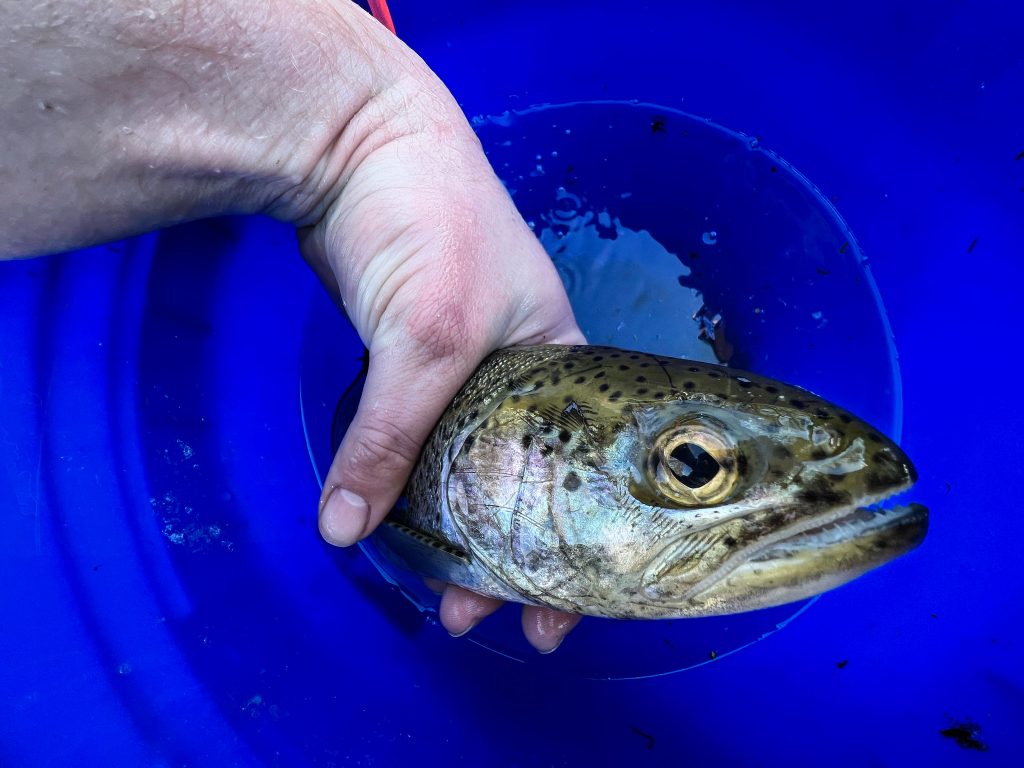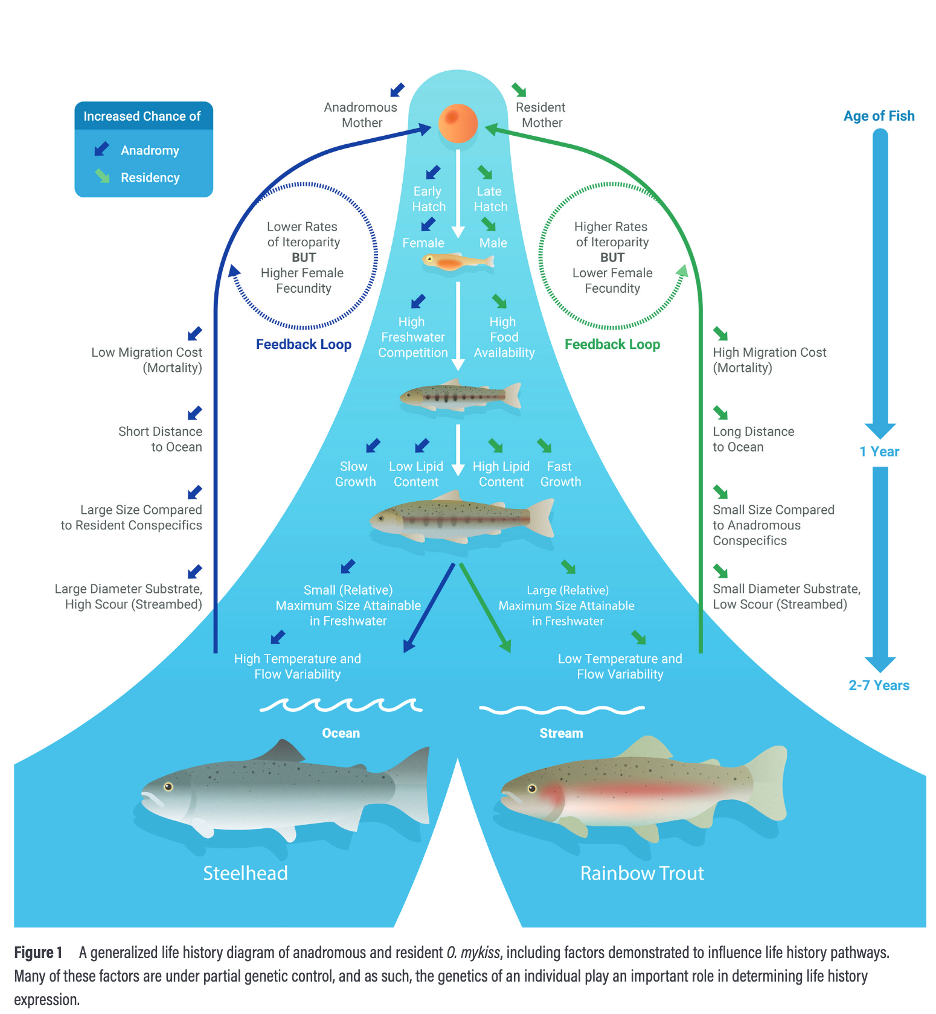Monday March 21, 2022

The rivers of California’s Central Valley are home to one of the southernmost populations of Oncorhynchus mykiss, a versatile species whose populations can consist of a mix of river-resident rainbow trout and steelhead that migrate to the ocean. Stark declines in migratory individuals led to the listing of Central Valley steelhead as Threatened under the Endangered Species Act in 1998. However, a major problem stands in the way of effective species recovery: a lack of data necessary to understand the population. Current knowledge of O. mykiss suggests that populations need both residents and migrants to be resilient, yet existing data on both life-history forms in the Central Valley are insufficient to assess the status and trends of either. Targeted monitoring programs that consider the unique ecology of the species are urgently needed to fill this long-standing knowledge gap. Fortunately, O. mykiss are quite possibly the most studied fish species in the world, and a new scientific paper by FISHBIO researchers published in the current issue of San Francisco Estuary and Watershed Science proposes leveraging this knowledge to develop O. mykiss-focused monitoring that can help study the interaction between resident rainbow trout and steelhead, and can evaluate the impacts of recovery actions (Eschenroeder et al. 2022).Unlike Chinook salmon, which have to migrate to the ocean and back to complete their life cycle not all O. mykiss will migrate during their lifetime – and understanding why some do and some do not is one of the most perplexing fisheries questions. FISHBIO researchers parsed through nearly a century of research on O. mykiss to investigate what causes some fish to become anadromous, or migrate to the ocean, while others stay put. Unfortunately, there is no easy answer because many factors and their interactions exert some control over what an individual fish will eventually do. Some factors are internal, such as genetics, sex, and individual growth, while others are external, such as quantity and quality of food, temperature, and stream size. Among all the studies reviewed, only a handful were specific to O. mykiss in the Central Valley, indicating a clear need for more research on the most influential factors driving O. mykiss anadromy in this region.

A primary focus of steelhead monitoring in the Central Valley is capturing migrating smolts moving downstream and adult fish moving upstream to spawn. Using data collected on anadromous fish in the Stanislaus River (one of the most comprehensively monitored rivers in the San Joaquin Basin), the authors show that data from this type of monitoring alone does not provide a full picture of the river’s O. mykiss population. Data from a fish-counting weir show that few adult steelhead migrate into the Stanislaus River to spawn in any given year. While a fair number of O. mykiss are captured in a rotary screw trap that is used on the river to monitor out-migrating juvenile fish, not all of them exhibit smolt characteristics and some are even resident adults. These data provide some indication of timing of peak movement, but they do not reveal how the young and mature resident rainbow trout in the population are doing. Luckily, water users have also funded annual snorkel surveys on the Stanislaus, which are used as a non-invasive method to estimate resident trout abundance. This additional monitoring component revealed that the estimated O. mykiss abundance was stable until a decline during consecutive low-water years from 2013–2016, and showed signs of recovering until 2020.
The complexity of O. mykiss life history requires a new approach to monitoring, one that covers all key life stages. The authors reviewed 12 sampling techniques that have been used in past O. mykiss monitoring and discussed the best applications of each. Weirs and rotary screw traps are effective at sampling the migratory component of a population, but as was seen on the Stanislaus, when anadromous smolts or adult steelhead are relatively rare, a low number of encounters can limit the ability to assess the population as a whole. On the other hand, snorkel, hook-and-line, and electrofishing surveys are well suited for monitoring juvenile and adult trout, and large numbers can easily be sampled where abundances are high. In addition to enumerating the resident and anadromous components of Central Valley O. mykiss populations, genetic monitoring of both forms is needed given the growing understanding of the genetic basis for life-history expression.
Management agencies tasked with the recovery of steelhead can benefit from monitoring that looks beyond migratory individuals and leverages the largely untapped resource of information represented by resident and juvenile O. mykiss. Recovery actions can be implemented to increase the number of anadromous individuals, but managers should be mindful that creating conditions that encourage anadromy may come at the expense of freshwater residents. The only way to prevent unintended consequences is to monitor both population components concurrently. If the goal of recovery is for Central Valley O. mykiss to be self-sustaining, then understanding how juvenile and adult residents contribute to O. mykiss population resiliency should be a high priority.
This post featured in our weekly e-newsletter, the Fish Report. You can subscribe to the Fish Report here.
